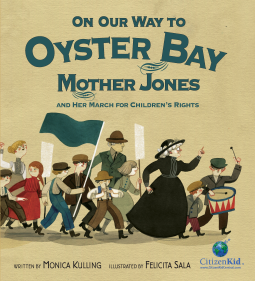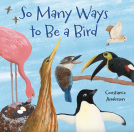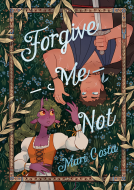Please wait... This may take a moment.
On Our Way to Oyster Bay
Mother Jones and Her March for Children's Rights
This title was previously available on NetGalley and is now archived.
Pub Date
Sep 06 2016
| Archive Date
Oct 24 2016
Description
Though eight-year-old Aidan and his friend Gussie want to go to school, like many other children in 1903, they work twelve hours, six days a week, at a cotton mill in Pennsylvania instead. So when the millworkers decide to go on strike, the two friends join the picket line. Maybe now life will change for them. But when a famous labor reformer named Mother Jones comes to hear of the millworkers' demands, she tells them they need to do more than just strike. ?Troubled by all she had seen, Mother Jones wanted to end child labor. But what could she do? Why, organize a children's march and bring the message right to President Theodore Roosevelt at his summer home in Oyster Bay, of course!?
Written by Monica Kulling, with vibrant illustrations by Felicita Sala, this nonfiction picture book uses an entertaining story about fictitious characters to bring a real event in history to vivid life. The actual march raised awareness across North America and contributed to the passage of the first child labor laws. It offers an excellent model for how ordinary people, including children, can make a difference by standing up for what's right. For lesson planning, there's more about Mother Jones, the march and child labor laws at the end of the book. There's also information about child labor today and concrete suggestions for getting involved and helping, making this book perfect for discussions about social justice, activism and citizenship.
Though eight-year-old Aidan and his friend Gussie want to go to school, like many other children in 1903, they work twelve hours, six days a week, at a cotton mill in Pennsylvania instead. So when...
Description
Though eight-year-old Aidan and his friend Gussie want to go to school, like many other children in 1903, they work twelve hours, six days a week, at a cotton mill in Pennsylvania instead. So when the millworkers decide to go on strike, the two friends join the picket line. Maybe now life will change for them. But when a famous labor reformer named Mother Jones comes to hear of the millworkers' demands, she tells them they need to do more than just strike. ?Troubled by all she had seen, Mother Jones wanted to end child labor. But what could she do? Why, organize a children's march and bring the message right to President Theodore Roosevelt at his summer home in Oyster Bay, of course!?
Written by Monica Kulling, with vibrant illustrations by Felicita Sala, this nonfiction picture book uses an entertaining story about fictitious characters to bring a real event in history to vivid life. The actual march raised awareness across North America and contributed to the passage of the first child labor laws. It offers an excellent model for how ordinary people, including children, can make a difference by standing up for what's right. For lesson planning, there's more about Mother Jones, the march and child labor laws at the end of the book. There's also information about child labor today and concrete suggestions for getting involved and helping, making this book perfect for discussions about social justice, activism and citizenship.
Advance Praise
“As a
classroom read-aloud, combined with discussion, this can be used as an overview
of social justice and activism.”
— School
Library Journal
“... this approachable title makes for a
good entry point to a unique historical event.”
— Booklist
“As a
classroom read-aloud, combined with discussion, this can be used as an overview
of social justice and activism.”
— School
Library Journal
“... this approachable title makes for a good entry...
Advance Praise
“As a
classroom read-aloud, combined with discussion, this can be used as an overview
of social justice and activism.”
— School
Library Journal
“... this approachable title makes for a
good entry point to a unique historical event.”
— Booklist
Available Editions
| EDITION |
Other Format |
| ISBN |
9781771383257 |
| PRICE |
CA$18.95 (CAD)
|
Additional Information
Available Editions
| EDITION |
Other Format |
| ISBN |
9781771383257 |
| PRICE |
CA$18.95 (CAD)
|
Average rating from 9 members
Readers who liked this book also liked:
Inbetweens
Faith Erin Hicks
Children's Fiction, Comics, Graphic Novels, Manga, Middle Grade



















